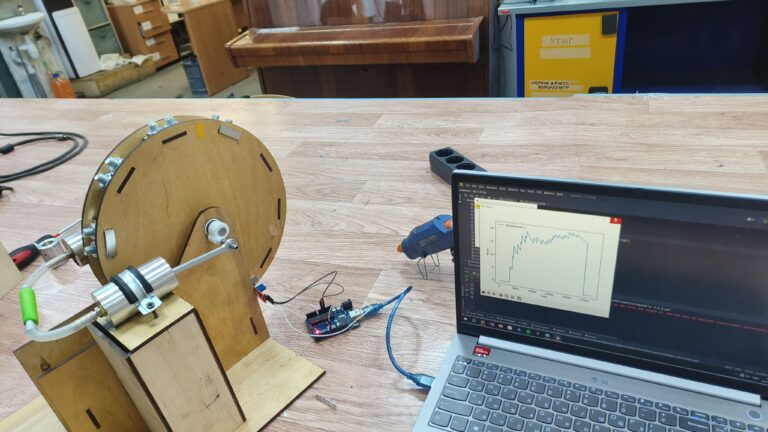How Engineers Lose Influence in Meetings
5 Critical Mistakes in Data Presentations
Hi all!
I want to write about how we present data to others. Technical professionals often face the need to convey the results of their work to people who are not so deeply immersed in the topic. However, even the most valuable findings can remain misunderstood if they are not presented correctly. In this article, I will look at five typical mistakes that engineers make when preparing presentations and suggest ways to correct them.

After 15 years of working as an engineer, I can say that working through these errors was a great career leap for me. The picture shows a real-life example! When I first started working with data, I often had to present it to management. And I was terribly angry that the directors did not understand anything and constantly doubted the results shown!
Outrageous! And only years later, I understood what the problem was here, and how to correct these mistakes.
Mistake 1: Overloaded Slides

Problem:
Often, when engineers need to make a report, they try to fit as much information as possible on one slide: graphs, tables, technical details. This leads to the audience getting lost in the flow of data and not being able to identify the main thing. After such a presentation, listeners are left with the feeling that their time was wasted, and their trust in the speaker falls.
How to fix:
Focus on key data and conclusions. Remember the simple rule: One slide – one idea. It's tempting to break it, because you want to tell a lot at once, as if you look more important and smarter this way… But it works the other way around.
Try to avoid unnecessary details and use simple pictures to focus on the main thing. Your data should speak for itself, without the need to explain every little thing.
A schedule is like a joke: if you have to explain it to your listeners, it’s a bad joke.
Mistake 2: Lack of coherent narrative

Problem:
Many engineers present their results in a haphazard manner, jumping from one graph to another without any obvious logical connection. This can confuse the audience and leave them without a clear understanding of what you are getting at. Structure is important, it is the presenter who has already become jaded and it may all be clear and obvious to you, the viewer is seeing your slides for the first time.
How to fix:
Present your data as a story with a beginning, middle, and end. Explain to your audience what they are seeing and why it is important. Each graph and slide should support an overall narrative that leads to a conclusion (after all, we need graphs to support your point, not just because we are good at making them). A well-crafted story will help hold attention and get your point across.
Mistake 3: Using complex or inappropriate charts

Problem:
Data scientists, especially data-savvy ones, love complex graphs that show all aspects of a problem. However, such graphs can be too complex for the audience to comprehend, especially if they are unfamiliar with the details of your work. This may not be obvious to the presenter because he or she has already spent a lot of time with the data and studied it from every angle. For the viewer, they are new.
How to fix:
Choose simple and clear visualizations (even if you think it’s trivial and boring). Use graphs and charts that are easy to interpret, even if the person doesn’t have deep technical knowledge. A simple but precise graph is much more effective than a complex one if it helps to quickly convey the essence.
Mistake 4: Lack of context

Problem:
Sometimes presentations lack context to help your audience understand what data means. This is especially true if your audience is not as familiar with the topic at hand.
How to fix:
Provide context before showing data. Explain why the data is important and what it means in the context of your work. Use analogies or simple examples to make the data more understandable and accessible.
Mistake 5: Lack of feedback and improvement

Problem:
Many professionals prepare presentations at the last minute, leaving no time for review and feedback (this is not always their fault, but still). As a result, even small mistakes can undermine the credibility of your work. The success of a presentation is 80% preparation.
How to fix:
Plan your presentation in advance so that you have time to check and get feedback. Show your presentation to colleagues or friends and ask their opinion. This will help identify weak points and improve the overall presentation. Show it to your grandfather or neighbor Granny Nyura. Ask what they understood. If they didn’t understand anything, think about whether your future viewers will be more competent in the matter. Perhaps something should be simplified.
Conclusion
Data visualization is a powerful tool for communicating the results of your work to your superiors or colleagues. Properly presented information can significantly increase your credibility and help you achieve your personal goals. Avoiding the mistakes described above will help you improve your presentations and make them more persuasive.
I have been interested in this topic for a long time storytelling with graphs and improving them for better perception. I learned a lot about this topic from the wonderful book Cole Knaflic – Storytelling with Dataas well as on her blog. I have even taught this approach to data science to my Masters students, as I find it incredibly useful in today's world. I continue to explore this topic further, with no end in sight!
If you want to learn more about data storytelling, I invite you to my channel dedicated to this topic: Chatting Charts. I'll be glad!
Thank you for reading to the end!




